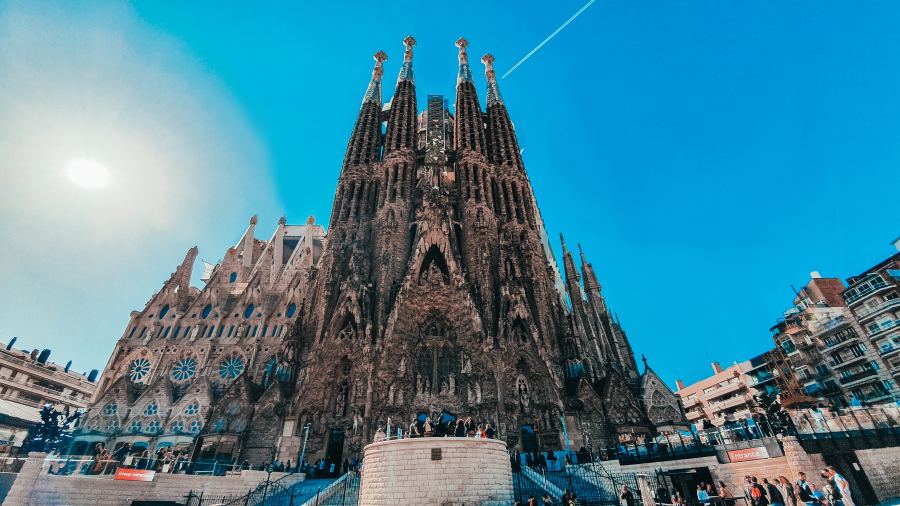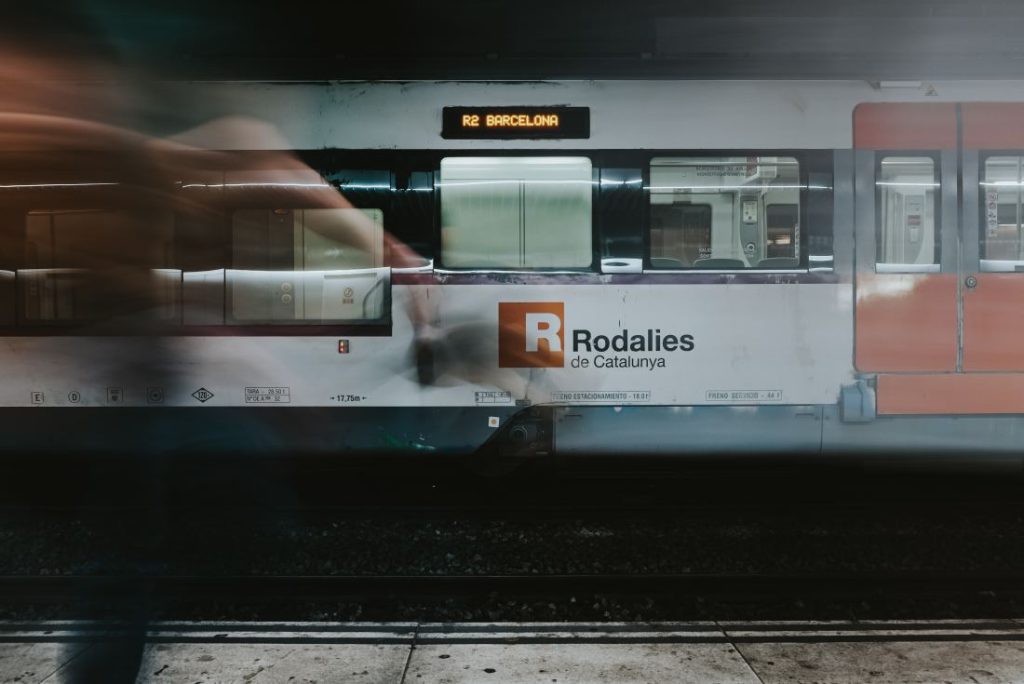I spent a few days in Barcelona with one goal: to discover as many sights as possible. I’ve been to the Catalan city twice before, and I can safely say it’s become one of my favorite places. In this first part, I’ll write about transportation, tourist passes, and some museums!
Let me state right away: even three full days weren’t enough, despite exploring the city all day. Not because Barcelona covers a large area (we only need to travel more to a few sights), but because there are so many buildings and attractions.
In part 2, I’ll write about public buildings and places, and in part 3 about Gaudí’s works!
Table of Contents
Barcelona Card
This card is the best for those who use public transport and want to visit several museums. You can save a lot of euros with it; I saved 85 euros.
Entry is free to more than 20 museums (including the Picasso Museum), and discounted to many others. Additionally, public transport is free, including the train and metro between the airport and the city center.
We can buy it online in advance, making it even cheaper. You need to present the received receipt at the pickup point, where you get two cards: a Hola Barcelona Travel Card and a Barcelona Card. The former is for public transport, the latter for museums. Both are valid from the first use.
There are cards valid for 72, 96, and 120 hours, with discounted prices for ages 4-12. You can buy it here and check where we can use and pick up the cards.
I picked mine up at the airport tourist desk, it took just a minute. It’s located in the arrival hall, marked with a Turisme de Barcelona sign.
Even in free museums, you need to ask for a ticket and mention that you have a Barcelona Card. You need to touch the card to a sensor and get a 0 euro ticket before entering. (They ask which country you’re from everywhere, they need it for statistics.)
Transportation
Wizz Air and Ryanair flights arrive at Terminal T2, from where you can get to the city by train or metro. The stops are next to each other, follow the train pictogram from the airport hall, it’s easily reachable with a few minutes walk.
I took the R2 train, which stops at several places: Sants, Passeig del Grácia (this is the direct city center, 30 minutes journey), El Clot. You can transfer to the metro at each of these places. The L9 metro also has a stop here, right next to the train station.
Otherwise, transportation in Barcelona is extremely simple. There are more than 10 metro lines and several railway lines, with plenty of transfer options. I dare say it’s one of the best-networked cities in the world.
However, be prepared that metro transfers sometimes require minutes of walking and climbing stairs multiple times. The many transfers are like a little workout. 🙂
It’s worth buying the aforementioned Hola Barcelona Travel Card, which can be used for the airport train, metros, buses (except those marked N), and the Montjuic funicular. (Available in 48, 72, 96, and 120-hour formats).
Museums
Picasso Museum
If you want to visit only one or two museums, this should definitely be one of them! I don’t think Picasso’s name needs much introduction.
You can see his works in several rooms: not only the well-known, characteristic avant-garde creations but also ceramics, for example. When I was there, we could also see Joan Miró’s works (if I remember correctly, they have a joint exhibition for a few months).
I asked for a ticket on-site, and you can enter the museum right away. Entry is free with the Barcelona Card.




Casa Amatller
Located right next to Casa Batlló, but the „neighbor” distracts attention from this house. However, it’s worth visiting this one too.


It can only be visited with a guide; you can buy tickets at the reception. We get an audio guide to hear information about the rooms in a chosen language. They pay great attention to the cleanliness of the house; you need to put on shoe covers before entering.


The rooms, halls, and the artifacts in them are very beautiful. Amatller was a wealthy chocolate manufacturer, and the frescoes, carvings, paintings, various objects all attest to this. The ceiling is especially noteworthy, with beautiful patterns in several places.


Entry is discounted with the Barcelona Card.
Catalan National Museum (Museu Nacional d’Art de Catalunya)
An iconic building of Barcelona, with a magnificent view from the front. We can see Mount Tibidabo opposite, and the two red towers of Torres Venecianes in the foreground.

But the interior of the museum is also beautiful; sometimes I felt like I was in a converted church. The central space is a huge domed hall where a monumental organ can be seen.


Of course, we can see many Catalan creations (paintings, sculptures, mosaics, frescoes, posters, etc.), and you can spend hours here if you want to thoroughly view the exhibition.


Entry is free with the Barcelona Card.
CosmoCaixa
It’s located a bit outside the city center: I traveled from Plaça Catalunya to the end station of metro L7, from there it was about a 7-8 minute walk (but there’s also a bus, number 196). It’s a perfect program especially for children.
It’s a multi-story building with a garden area, where many branches of science are presented interactively: earth history, astronomy, physics, etc.


I found it interesting too, but as I mentioned, it’s mainly designed for children. There were several school classes there, and as I saw, every child really enjoyed it. Interactivity is the key to all this…

Entry is free with the Barcelona Card.
Frederic Marès Museum
For me, this was one of the biggest positive surprises. If I hadn’t had a Barcelona Card (with which entry is free), I probably wouldn’t have gone in…
It’s located next to the cathedral, with the entrance opening from a small courtyard. It has several floors, and if you want to thoroughly explore it, plan for a few hours because there are lots of beautiful sights.

The creations are arranged thematically: sculptures, frescoes, religious objects, fans, ceramics, and much more.


Joan Miró Museum (Fundació Joan Miró)
This modern art museum is on Montjuic hill, not far from the Olympic Stadium. Entry is free with the Barcelona Card. The 150 bus starting from Plaça Espanya has a stop nearby (this bus takes you up to the castle at the top of Montjuic).
Its namesake is the painter born in the city, whose creations greatly resemble Picasso’s. These few works also confirm this:


Chocolate Museum (Museu de la Xocolata)
Near Ciutadella Park, we find the chocolate museum, which is a separate room of a café.
You need to ask for the ticket at the counter, which is a piece of chocolate. We can enter the museum with the QR code on the packaging. After entering, we can eat it; it’s not needed to exit.
In reality, it can be explored in 10-15 minutes: chocolate creations in display cases, tools used for making chocolate, and a video about chocolate making. It’s a great experience especially for kids, although I also clicked my tongue at some creations.


Entry is free with the Barcelona Card.
Museum of Design (Museu del Disseny de Barcelona)
There’s an exhibition of Spanish applied arts creations on several floors. It’s not a popular museum; there were maybe three people including me. It’s located at the Glòries metro stop on the L1 line.

I’m not saying it’s not worth coming here, but if you only want to see a few museums, it can be skipped. However, the view is very beautiful in the evening, as the red-blue Torre Glòries rises right next to it. You can take good pictures.


Entry is free with the Barcelona Card.
What Can Be Skipped
I have to mention that there are a few museums where I would have cried if I had to pay for entry. All the listed museums are free with the Barcelona Card.
CCCB and MACBA are located next to each other. These are modern contemporary art museums where we can see „interesting” creations. Maybe the problem is with me, but somehow I couldn’t appreciate most of it. The best was a twig that I couldn’t interpret no matter how I looked at it.
The Egyptian Museum (Museu Egipci de Barcelona) near Casa Batlló is a good exhibition, but it’s quite small compared to the 12 euro entry fee. There are three small rooms (basement, ground floor, first floor), and it can actually be explored in a quarter of an hour.

El Born Centre de Cultura i Memòria is next to Ciutadella Park, where the former ruins of the city are. The exhibition is in a large covered hall, actually showing former walls and foundations. Nothing special.

The Ethnological Museum (Museu Etnològic i de Cultures del Món) is next to the Catalan National Museum. As the name suggests, it presents local culture and folklore. I’m not saying you should avoid it, but it might not be worth coming just for this.





